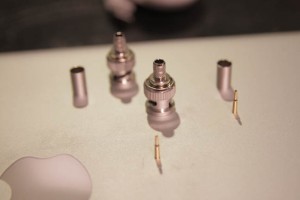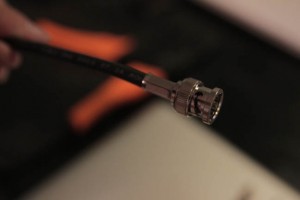We already talked about building your own xlr audio cables from scratch. This post will describe how to build your own SDI (Serial Digital Interface) or video cables from scratch. It’s extremely important to know that you have reliable cables, and that your signal quality going to your monitors is exceptional. This is again, why, for the most part I build my SDI cables from scratch.
***Disclaimer: Although building cables is fairly simple, it does take lots of practice and a bit of expert advice.***
What you’ll need
Cable: Canare LV-77S. It’s extremely rugged and flexible.
Connectors: Canare BCP-C77A
Tools: Cable Cutter, Coax Cable Stripper, BNC Crimp Tool, Push Pin, Fine Scissors or Snips
We like Markertek for all of our parts and tools but you can source these from anywhere you trust.
Step 1: Determine the length you want the cable to be. Once you have determined the length, cut the cable with your wire-strippers/cable cutter.
Step 2: Lay out all the pieces from each BNC connector. There will be a Sleeve, Twist Lock Connector, and a Pin. (Note: Be careful not to loose the pins, they are very small.)

Step 3: Slip both Sleeves over the cable.
Step 4: Use the Coax Cable Stripper to remove the outer and inner insulation. You only need to remove about a half inch of insulation. Most strippers have two blades that can remove the correct amount of material automatically.
Step 5: Unbraid the braided shield and trim to about a quarter of an inch or less. This will form the ground for the connection. (A thumbtack is very useful for unbraiding the shield)
Step 6: Trim the end of the copper core just enough so that the core inserts into the Gold Pin, and the Gold Pin is flush with the interior insulation.
Step 7: Use the smallest setting on your crimp tool to crimp the Gold Pin onto the copper core. You will want to crimp it a couple times.
Step 8: Push the Twist Lock Connector onto the cable till the Gold Pin is flush with the Twist Lock Connector. Make sure the braided core is on the outside of the base of the Twist Lock Connector.
Step 9: Twist the braided core around the base of the Twist Lock Connector.
Step 10: Slide the Sleeve over the base of the connector and crimp using your crimp tool.
Step 11: Repeat Steps 4-10 on the other end of the cable
Step 12: Test your cable with your gear.
All cables and connects are a bit different from model to model and brand to brand. Check with the manufacturer for specific specs.





